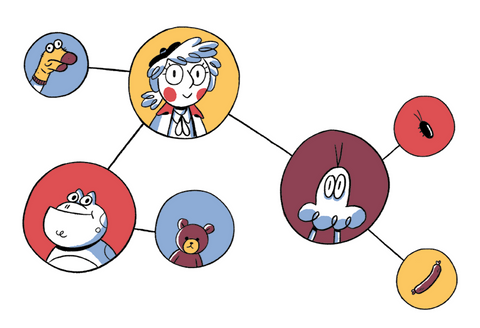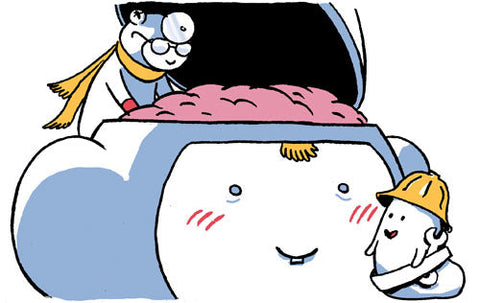Behind every great leader is the set of principles they hold that informs how they do things.
Leaders don’t (usually) write their leadership style down; they are led by their subconscious beliefs about leadership, integrity, productivity and more.
But, over the years, patterns appear. And those patterns can help us to categorise different leadership frameworks. Each framework has its merits and drawbacks, and is useful in different situations.
If you’re keen to better understand leadership styles - and to hone your own - we’ve got a veritable smorgasbord of frameworks and approaches to browse.
But there’s no need to follow any of them to the letter - pick what feels right from each one. That might be right for your personality, your business or your team.
And if you lead other leaders? See how many different leadership styles you can see in action. You might be surprised to find that there’s a dash of method even in your most maverick leader’s choices!
Before you dive in, take a moment. What kind of leader do you want to be? There are three key elements that contribute to your ‘leadership style’:
- Context: your industry and organisation, especially the culture and policies, create boundaries within which your leadership framework must operate. What are these boundaries? And your team - the size, function and individual personalities all create context that needs to be considered.
- Control: similar to context - how much control do you actually need to have? For example, if you work in a dangerous environment, it may be important for you to have complete oversight of everything that goes on. If you’re heading up a team of creatives, it might be that you can let your team do whatever they like provided the end result is right.
- Personality: your own, that is. Do you already have a leadership style? What drives your decision making? How do you like to communicate - how flexible are you? What are your priorities? What are your weaknesses?
Have a think about the answers to these questions, then see if you notice any parallels with the leadership frameworks below. We’ll examine each style’s tell-tale behaviours, its pros and cons and the situations in which it works best. Not all of these styles are mutually exclusive; some feature many of the same behaviours, though there will be subtle differences.
Leadership styles
There are many, many ways to categorise leadership styles. Some argue that all leaders are either:- Transactional, exchanging money and praise (extrinsic rewards) for work well done.
- Transformational, aligning people with the mission so that progress is its own (intrinsic) reward.
Autocratic leadership is a form of transactional framework - it’s included in the list below. But many of the other approaches use both intrinsic and extrinsic rewards depending on the situation.
Democratic Leadership style
Democratic leadership means involving your team in decision making. It sounds simple, but to do this well you’ll need to ensure your team has a high level of psychological safety and that they communicate effectively.
- Pros: it’s empowering and avoids your own biases affecting decisions. Encourages collaboration and accountability.
- Cons: it can be long-winded, and without the right environment you may end up with some people not contributing, or over contributing, or even not being honest when contributing for fear of reprisals.
This works well for small, agile teams who communicate frequently enough to understand the repercussions of each decision on other members of the team. A good way to ensure this level of engagement is maintained is through the use of regular retrospectives and one-to-one meetings.
Autocratic Leadership
The autocratic leadership style is the polar opposite of democratic leadership. Autocratic leaders do not seek out their team’s input when making decisions - as a rule.
- Pros: total control, everyone knows where they stand and where to go when issues arise and there is no long-winded team decision-making process.
- Cons: you miss out on insights from your team, who are often closer to the ‘work’ and therefore have plenty of value to offer. Your team members may also feel like a cog in a machine, which can also be bad for morale and productivity.
This leadership framework can work for you if you are extremely competent and your workplace requires a clear chain of command to function effectively.
Laissez-Faire Leadership
Laissez-faire leadership is, as it sounds, pretty laid back. It sees leaders put trust in their team, allowing them to set their own schedules and deadlines and choose the way they work.
- Pros: very motivating, encourages creativity and innovation and allows people to work in the way that best suits their needs.
- Cons: requires high levels of psychological safety, solid communication and - of course - reliable team members. If someone wants to take advantage, it’s easier to do it under this leadership framework.
This is a great approach to use when you have a lot of control over who you hire, so you know your team has the skills and confidence required to get things done. It’s also highly beneficial for more creative teams, as it encourages innovation and thinking outside the box.
Strategic Leadership
Strategic leaders are ones that create a vision for their organisation and its goals, then bring the rest of the team along for the ride. By getting people fully on-board, they become equally as dedicated to your goal as you are. That means that they act and make decisions in line with your desired outcomes.
- Pros: can seriously streamline operations, fosters positive feelings about working for the company and inspires people to innovate and work hard.
- Cons: requires a deep understanding of the company, its customers and its strengths and weaknesses, as well as the ability to inspire others and create an effective strategy.
Most organisations benefit from having this type of leader, especially at senior level. It could be difficult to enact this framework if you’re leading an operational team of workers far down the corporate hierarchy.
See also:
Visionary Leadership
The Visionary leader is someone who, again, has a strong vision for the organisation’s future, and how to get there. But this approach is more radical in that nothing is ‘impossible’.
- Pros: highly innovative, can be extremely rewarding for people who are suited to it.
- Cons: high levels of risk, and it’s possible for employees to burn out when they are constantly asking ‘What if’ and never actually finishing a project.
This type of leadership is often seen by super rich folk running high-tech start-ups. The ‘rich’ bit is required if you’re really going to push boundaries and test lots of ideas, and tech lends itself to this scenario.
Transformational Leadership
A Transformational Leader focuses on people, the future and on change. This means motivating people to be bold and take risks.
- Pros: great for organisations undergoing (or that need to undergo) major changes. Supports innovation and leads to great interpersonal relationships between you and your team.
- Cons: requires great people skills and the bravery to accept risk and support your team to do the same. Not for the faint hearted!
This approach is not just perfect for businesses that need to switch things up to maintain their competitive edge. It’s also great for teams that work in fast-paced or challenging environments, where adaptability is more important than predictable outcomes.
Coaching Leadership
A Coaching Leader is dedicated to developing and supporting their team to achieve their best.
- Pros: great for morale, engagement, motivation and job satisfaction. Likely to mean that there is high psychological safety and great communication.
- Cons: requires a great deal of individual input into each person on the team, and reciprocal levels of effort on their part.
Works well with small teams where the leader is not bogged down in a lot of operational work. It’s particularly effective if your team are all enthusiastic about their work and personal development - although if that’s not the case, it’s worthwhile to find out why (regardless of the leadership style you wish to use).
Bureaucratic Leadership
The Bureaucratic leadership style includes measures to ensure the system works like clockwork: a rigid hierarchy, absolute clarity of roles and responsibilities, efficient processes.
- Pros: very efficient in highly process-driven environments, creates great clarity and is easily supplemented with approaches from other leadership styles.
- Cons: can easily become authoritarian if interpersonal relationships are not nurtured. Requires the manager (as well as everyone else) to fulfil their own responsibilities with 100% commitment.
This is another leadership style that works well when units of output are one of your key performance indicators, or when applied to aspects of your team’s responsibilities that are numbers driven. It’s also pretty much vital when your team works in a dangerous environment.
Pacesetting Leadership
Pacesetting leaders are highly results driven: they know what the best possible outcome is, they know what’s got to be done to achieve it and they want their team to follow their lead and make it happen. They expect great things from every person on the team.
- Pros: with the right leader, this approach can be inspirational and lead to high levels of productivity.
- Cons: requires a very realistic strategy that pushes the limits but does not break them - otherwise, people get left behind and feel like a failure, which can bring morale crashing down.
This approach can work well for teams that work on small, defined projects that don’t have a tonne of external dependencies, as well as being ideal for the early growth stages of a start-up.
Servant Leadership
At almost the other end of the spectrum to pacesetting leadership, you'll find the Servant leadership framework. So-called because the manager dedicates most of their energy to serving their team. That means a lot of communication and support for their development in order to ensure that each person on the team achieves their full potential. Coaching leadership is like a 'Servant leadership lite'.
- Pros: creates an environment where people learn and grow, allows teams to operate knowing they have the full support of their manager.
- Cons: does not work if the manager has heavy operational responsibilities beyond 'management', could undermine manager's authority.
Situational Leadership
Situational leadership may be the last of the leadership frameworks on the list, but it sits up there next to transformational leadership in terms of desirability. That’s because it is the practice of applying different styles of leadership to different people and situations.
- Pros: highly adaptable, helps support diverse teams, encourages psychological safety.
- Cons: risks seeming like unfair treatment or favouritism if people feel they are being treated differently to their colleagues. Can also appear inconsistent, especially to other leaders who have a more regimented approach.
This leadership framework can be applied anywhere, as it pulls from each of the other approaches depending on requirements.
What do great leaders have in common?
Some of the most effective teams on the planet have wildly different leaders - but they often have these things in common:
Whatever style you want to implement, learn as much as you can about building these foundational features within your team and you'll be on path to success.









